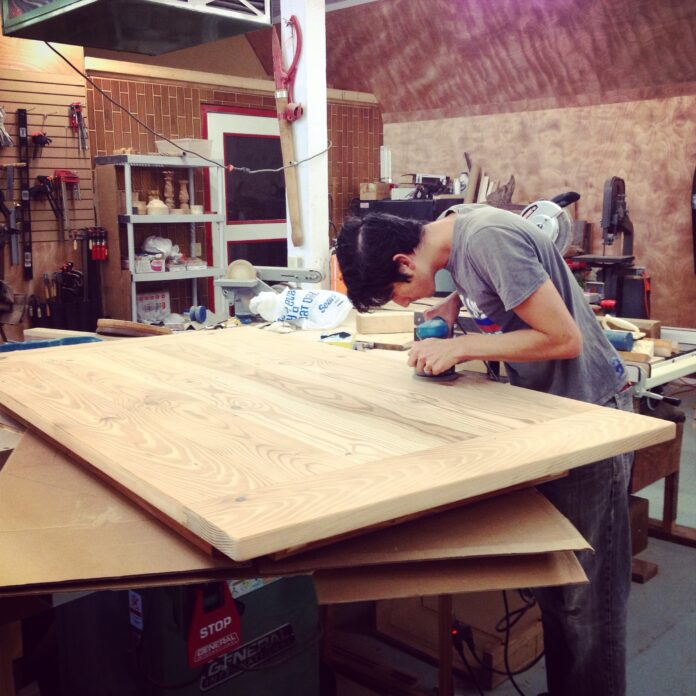Sourcing Sustainable Wood: Ethical Practices for Longevity
Let’s start with the foundation of every custom furniture piece: the wood. For artisans committed to sustainability, sourcing isn’t just about aesthetics or cost—it’s about legacy. Your work should honor the environment as much as it serves your clients.
1. Certified and Reclaimed Materials
Forest Stewardship Council (FSC)-certified wood is non-negotiable. This certification ensures forests are managed responsibly, balancing ecological health with timber production. Avoid labels like the Sustainable Forestry Initiative (SFI), which lack rigorous oversight. For a deeper impact, explore salvaged urban lumber—trees felled by storms, construction, or disease. Companies like New York Heartwoods specialize in milling these “waste stream” trees into stunning slabs, transforming local tragedies into heirloom pieces. Imagine crafting a dining table from a 100-year-old oak that once shaded a neighborhood park—now that’s storytelling.
Reclaimed wood from demolished buildings adds historical character, but its irregular grain and texture demand flexibility. Vermont Woods Studios champions North American hardwoods like cherry and walnut, sourced locally to minimize carbon footprints. Remember: tropical hardwoods like mahogany or teak are ecological red flags. Their slow regeneration and ties to deforestation make them unsustainable choices, no matter how luxurious they seem.
2. Waste Reduction and Circular Design
Every scrap tells a story. Seth Rolland’s studio exemplifies zero-waste practices: offcuts become bookends, sculptures, or fuel for heating workshops. Sawdust? Compost it. For finishes, ditch formaldehyde-laden options. Bioshield hard oil and Livos Kunos offer non-toxic alternatives that enhance wood’s natural beauty without harming artisans or clients.
3. Partnering with Purpose
Collaborate with local sawmills and arborists. When a client in New Rochelle needed a tree removed, Megan Offner of New York Heartwoods transformed it into an entire bedroom suite—a poetic nod to the tree’s history. These partnerships not only reduce shipping emissions but embed your work in the community’s narrative.
Navigating Client Design Disputes: Communication and Contracts
Even Michelangelo had critics. Disputes aren’t failures—they’re opportunities to refine trust. Here’s how to turn potential conflicts into collaborative wins.
1. Pre-Project Clarity
Begin with a signed contract. Outline deliverables, timelines, revision limits, and payment schedules. Use SketchUp or hand-drawn sketches to visualize designs, and leave a copy with the client. One woodworker shared a genius tactic: during consultations, he compares wood’s natural color variations to Formica’s uniformity. Clients instantly grasp the trade-off between authenticity and perfection.
2. Mid-Project Check-Ins
Invite clients to your workshop during dry-fitting stages. A unassembled bookshelf might look alarmingly large in their living room, but in your shop, they’ll see its joints, proportions, and craftsmanship. Offer finish samples—a walnut stain on maple can look vastly different under their lighting. Emily Henderson, a designer, emphasizes “fix-it-first” accountability: absorb costs for functional errors (e.g., misaligned drawers) but charge for post-approval aesthetic changes.
3. Conflict Resolution
When a client balks, ask: “What can I do to make this right?” One artisan recounted rebuilding a dresser at no cost after a client changed their mind post-delivery. Though costly, that gesture earned lifelong loyalty. For disputes over subjective details (e.g., wood grain patterns), refer back to the contract. As forum veteran “oldusty” advises, “Reasonable hats on both sides” prevent battles.
Preventing Delivery Damage: Packaging and Logistics
Your masterpiece deserves to arrive as flawlessly as it left your workshop. Let’s talk armor.
1. Fortress-Level Crating
Use ¾-inch plywood for custom crates, lined with foam or recycled blankets. Seth Rolland salvages grocery store boxes and bubble wrap—eco-friendly and effective. For oversized pieces, design forklift-friendly bases and include unpacking instructions. One mishap-prone woodworker started filming the packing process; clients now appreciate the care behind the layers.
2. Shipping Savvy
Partner with freight companies experienced in fragile cargo. ShipBob’s data shows 20% of ecommerce returns stem from damage—avoid this by choosing carriers that offer insurance and real-time tracking. Labeling boxes “Fragile” is debated (some claim it invites rough handling), but tilt indicators can pinpoint mishandling.
3. Post-Delivery Protocols
Require clients to inspect items immediately. A photo of a dented corner sent within 24 hours simplifies insurance claims. Offer repair kits for minor scratches—a vial of matching finish and sandpaper shows you care beyond the sale.
Final Thoughts
Sustainability, communication, and resilience aren’t trends—they’re the bedrock of craftsmanship. By marrying ethical sourcing with empathetic client relationships, your workshop won’t just build furniture; it’ll cultivate stories worth passing down. Now, go make something beautiful


